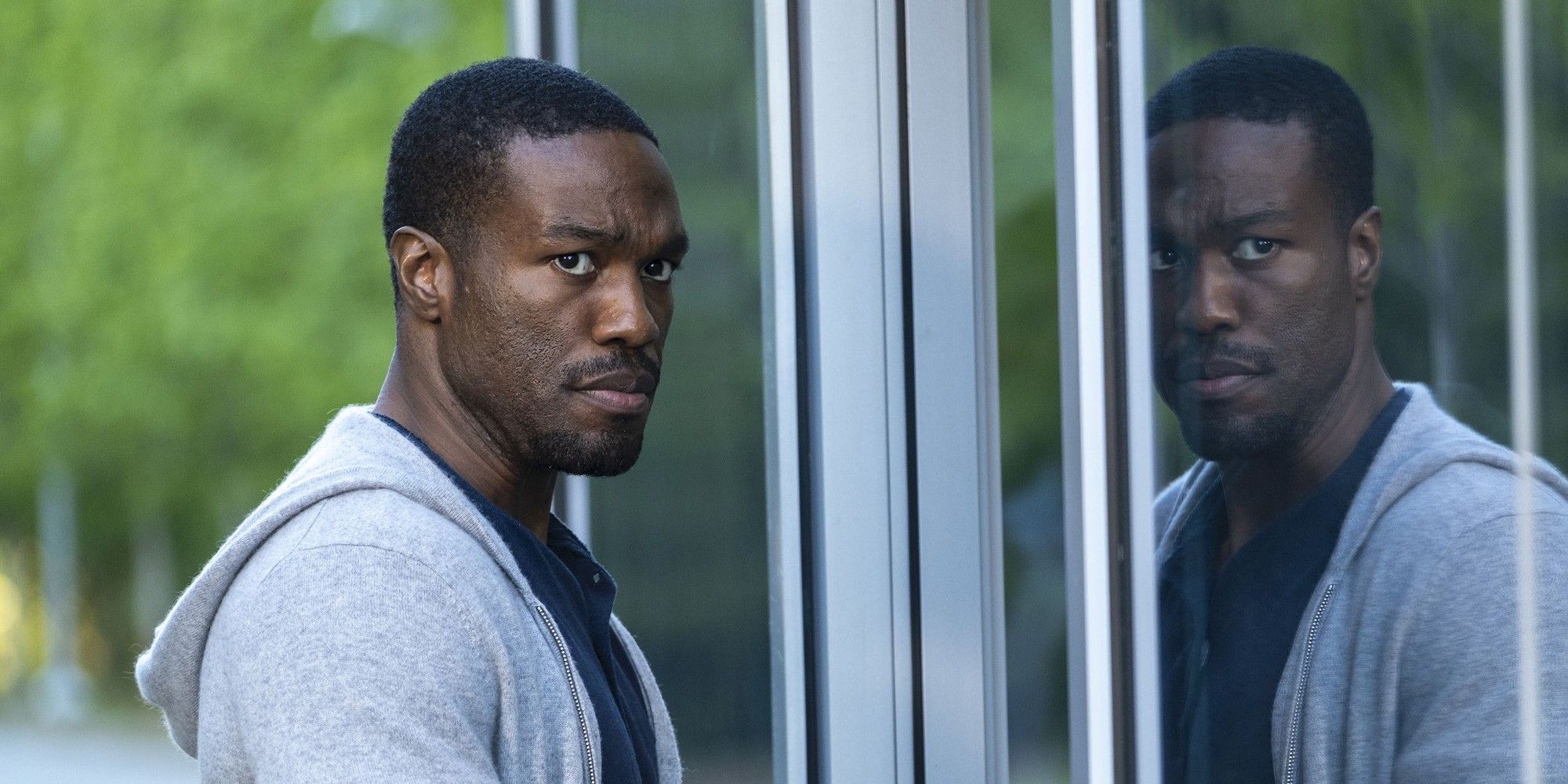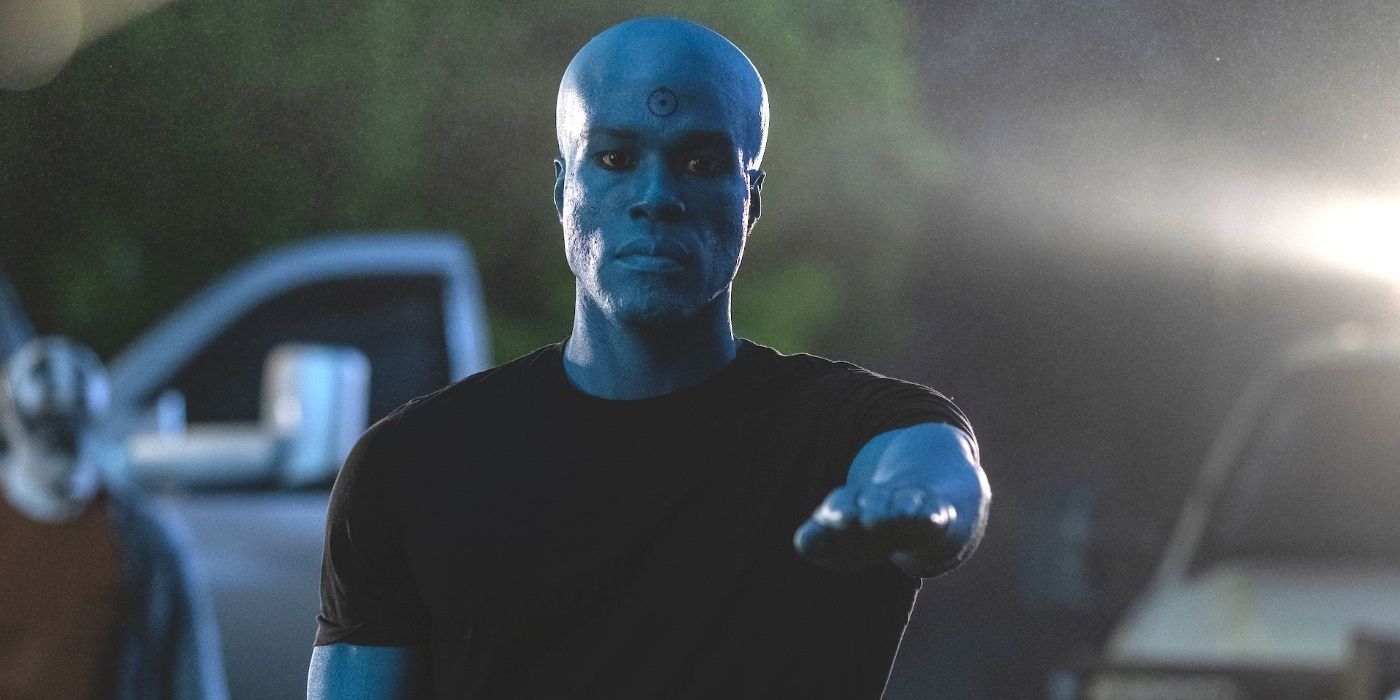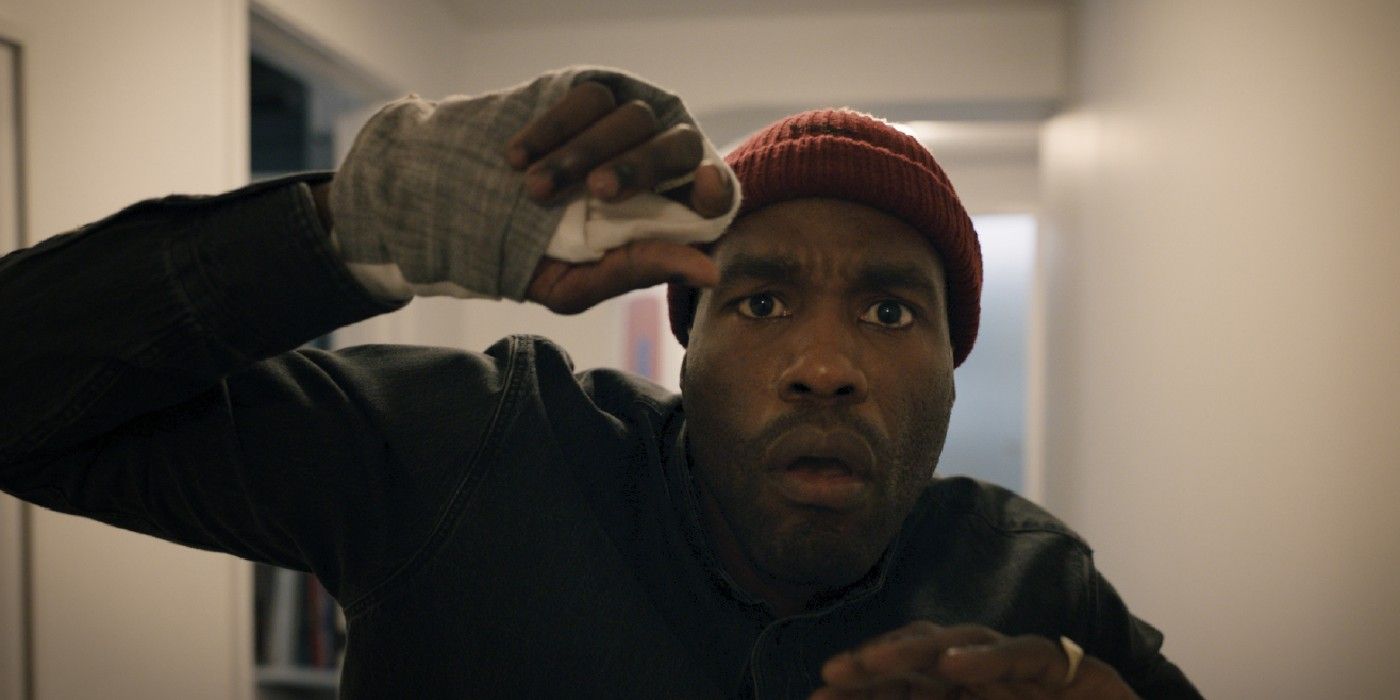Yahya Abdul-Mateen II is best known for two renowned characters, Watchmen's Doctor Manhattan and the titular antagonist of 2021's Candyman, but the former was handled much better than the latter. HBO's Watchmen series picked up the story 34 years after the conclusion of Alan Moore and Dave Gibbons's DC comic of the same name. Similarly, Nia DaCosta's Candyman sequel was a continuation of the nearly 30-year-old story from the original 1992 film. Abdul-Mateen is excellent in both, but Watchmen's Manhattan twist was better executed, whereas his character's change in Candyman was less impactful.
SCREENRANT VIDEO OF THE DAY
Both projects were burdened with the challenge of replicating the feel of their respective originals. Watchmen and Candyman succeed in capturing the tone of their iconic source material while effectively weaving in new narratives and lore. Series creator Damon Lindelof proved he could navigate the time jump in HBO's Watchmen and also deftly incorporate critical messages from the comics published in the 1980s. Likewise, compared to Bernard Rose's original Candyman movie, Nia DaCosta's interpretation layers relevant social commentary that the first installment lacked. The new iterations owe much of their accomplishments to the diligent work of their respective producers and directors, but Yahya Abdul-Mateen is the conduit through which much of this success is achieved.
The latest installment in the Candyman film franchise unequivocally deserves plaudits for disregarding the events of the previous two sequels, as the soft reboot instead focuses on unresolved plot threads from the first film released in 1992. The Watchmen HBO series critically employs this same tactic, as it's not connected to Zack Snyder's 2009 film adaptation. Both stories are tales of self-discovery, as Yahya Abdul-Mateen II's characters explore their own identities. Much of this history is conveyed through powerful plot-related and socially cognizant exposition. Where Watchmen's depictions serve a fitting purpose for audience understanding, Candyman misses the mark in this respect, as the exposition is less thoughtful. Ultimately, this discrepancy exists due to the unique nature of Abdul-Mateen's two characters and is not the fault of the creatives behind Candyman.
Watchmen & Candyman Both Have Yahya Abdul-Mateen II's Character Identity Change

In The Official Watchmen Podcast from HBO, Damon Lindelof elaborated on Yahya Abdul-Mateen II's character, Cal Abar. Lindelof explained that Cal is portrayed as intentionally dull, his character aligning with that of Doctor Manhattan in the Watchmen comics, passive and unimaginative. When shooting the pilot episode, Lindelof kept Abdul-Mateen in the dark about the true identity of his character, a secret that helped contribute to the in-universe reality. The fact that even Cal is unaware that he is Doctor Manhattan makes the eventual reveal even more potent, as the series expertly misdirects audience expectations around Manhattan in favor of other story choices.
With Candyman functioning as a direct sequel to the original movie from 1992, the opportunity was presented to further flesh out the title character. Yahya Abdul-Mateen plays the curious artist Anthony McCoy, who develops an interest in the exploits of the Candyman legend. Anthony's passion for this tale eventually culminates with an exhibition of evocative paintings inspired by the haunting stories. This initial fascination with the Candyman turns into an unhealthy obsession, as his sanity begins to slowly unravel. An infection caused by an earlier bee sting plagues Anthony's body, and this physical change coupled with his rapidly deteriorating psychological state begins Anthony's physical and mental transition into the familiar image of the Candyman.
Why Watchmen's Doctor Manhattan Twist Is So Powerful

Damon Lindelof stated that one of his goals with the series was to craft a project worthy of the name Watchmen. He described the original 12 issues of the comic as a "seminal" work but also strove to tell his own version of the iconic story. Watchmen is ripe with Easter eggs and homages to the source material, but more importantly, the story is focused on layered themes of legacy and identity. Lindelof's trademark ambiguity is carried over from shows like Lost and The Leftovers, as he assumes his audience is sophisticated. This approach was critical, in that it allowed him to avoid conventional exposition. Instead of simply explaining to the audience that Cal is Doctor Manhattan, viewers are allowed to understand the dynamic of Yahya Abdul-Mateen II's character through his own subjective perspective in Watchmen season 1, episode 8, "A God Walks into Abar."
In its penultimate episode, Watchmen shows how Doctor Manhattan experiences time through a series of scenes that chronicle the past, present, and future. Manhattan's powers allow him to exist in multiple places simultaneously. In this sense, the bar scenes are not exposition, they are his reality. Abdul-Mateen's true character has been covered up and masked by Cal Abar's lack of self-awareness.
This calculated character choice was deliberate by Lindelof, as Watchmen's story is intentionally focused on Cal's wife, Angela (Regina King), who was a new addition, not a returning character, in the Watchmen HBO series. That Angela not only knew about Cal's true identity but schemed with Doctor Manhattan to hide him in plain sight is the key to the execution of this powerful twist. Although it's hinted throughout Watchmen that Abdul-Mateen's Cal is Doctor Manhattan, the twist functions as a means to highlight Angela confronting her traumatic past and repairing her relationship with her estranged grandfather.
Why Candyman's Yahya Abdul-Mateen II Change Doesn't Work

Where Watchmen's reveal is cleverly executed, Yahya Abdul-Mateen II's character change in Candyman falls flat. In a move of desperation, Anthony visits his mother to uncover the truth about his murky past. Anne-Marie McCoy (Vanessa Estelle Williams) info dumps the truth that Anthony was the child abducted by Candyman in the original movie. Disgusted by this revelation and shocked that his mother withheld this secret from him, Anthony feels he has nowhere left to turn for answers but William Burke (Colman Domingo), a character who had also encountered the Candyman as a child.
Burke takes advantage of Anthony's desperation and deteriorated state with a twisted plan that sets up Abdul-Mateen as the newest version of the hook-handed killer. In a last-ditch effort to prevent the further gentrification of Chicago's Cabrini-Green neighborhood, he attempts to perpetuate the urban legend of the Candyman through Anthony. In a powerful albeit twisted message from Burke, he turns Anthony into more than the Candyman: a symbol of Black injustice. This commentary is laced throughout the movie, as the original Candyman is shown to have been harmless but was still beaten to death at the hands of white cops.
Ultimately, Burke's plan is convoluted, as is the execution of the message behind Yahya Abdul-Mateen II's Candyman. The change lacks subtlety and nuance, as Anthony's Candyman is a repetition that merely functions as a vessel to the older nostalgic version. Although the twist that Abdul-Mateen's character was the child abducted by the Candyman in the first movie was a compelling revelation and one that ties together the theme of cyclical injustice, it's poorly executed. While Watchmen's twist paints a holistic character-centered picture through the ruse of Cal Abar and the intricate perspective of Doctor Manhattan, the 2021 Candyman movie disappointingly opts to tell a familiar story through uninspiring exposition.
Both stories are focused on these pertinent themes of legacy and childhood trauma. Angela's connection to Doctor Manhattan allows the wounds from her childhood to heal. By the end of the show, she no longer hides behind the guise of Sister Night, just as Cal is no longer hidden as Doctor Manhattan. Whereas with Candyman, Anthony allows his physical and emotional wounds to fester. He covers up his bee sting and allows his obsession to consume him. By the end of the movie, this obsession leads to the undoing of his relationships with his partner and family. Watchmen's story subverts typical conventions of the superhero genre, as the HBO show condemns violence and the false identities that supposed heroes hide behind in favor of a plot that focuses on repairing relationships with family. This is contrary to Candyman. There, a cyclical story of violence and the destruction of familial relationships is perpetuated at the hands of Yahya Abdul-Mateen II's Candyman, and it's not executed so well.
